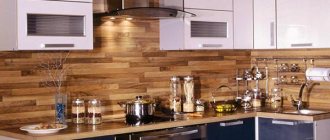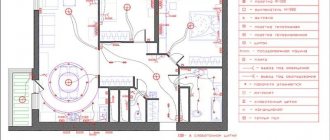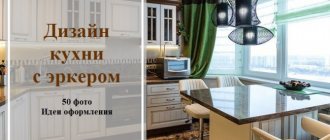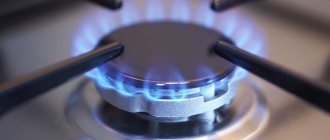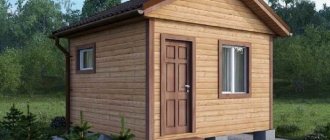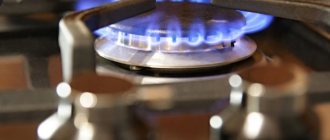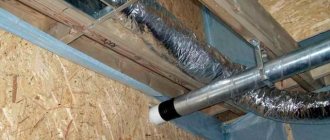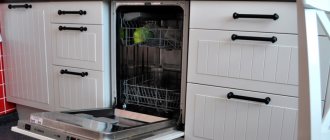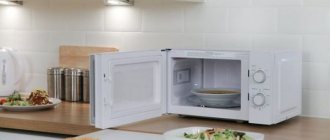Kitchen design
0
15 444
Share
With a wide range of kitchen appliances to choose from, you can do without a classic stove. This option is acceptable for a young couple who rarely eats at home and lives in a studio apartment.
- Which stove to choose: electric or gas?
- Glass ceramics
- Slab size
- Ceiling
- Installation of a built-in kitchen
- Design and interior in small spaces
- Small studio apartment
- One-room apartments
The family requires the presence of a stove, even in a small kitchen. It will take up less space, kitchen appliances advertised in commercial breaks.
If anyone thinks otherwise, let’s estimate together how many gadgets will fully replace a conventional stove and oven:
- Microwave.
- Air fryer.
- Multicooker.
- Bread maker.
- Toaster.
- Electric Turk.
- Electric kettle.
Now imagine where all this should be located, how much it will cost and what the electricity bills will be. It turns out that the stove takes up less space, costs less money and consumes less electricity. Therefore, the right choice is a kitchen with a stove. A few photos of the kitchen with the stove will help you verify this.
What does the color of the flame on the burners indicate?
The flame on a gas stove or boiler often has different shades. The color depends on the quality of gas supplied to the apartments. It is used to judge the physical and chemical characteristics of the fuel mixture.
High-quality fuel with a homogeneous structure is distinguished by uniform combustion and a rich blue color of fire. Such gas burns completely, releasing the maximum amount of heat and a minimum of harmful substances.
The purity of combustion is affected by the hydrogen content. If red , orange or yellow , this indicates a problem.
There may be two reasons:
- Imbalance in the air-fuel mixture.
- Low energy quality.
An abnormal color of the flame in the burner indicates the presence of undesirable impurities, incomplete combustion of fuel and the formation of carbon monoxide. Therefore, both cases are potentially dangerous.
An imbalance in the fuel mixture can occur due to insufficient or excessive air flow, or the burner becoming clogged with soot, dust, or soot. It happens that low-density , which is not capable of providing the optimal level of heating.
If you find a non-standard shade of flame in the burner, contact the gas specialists or the responsible authorities. Low-quality fuel is dangerous when used, leads to increased costs, premature wear of gas equipment and various emergency situations
In this situation, normal operation of the system requires large amounts of resources, and, consequently, utility bills increase. Typically, the culprits are management companies that increase their income by deliberately reducing the hydrocarbon and carbon dioxide content of the energy carrier.
Recommendations for safe use of gas
In practice, most explosions and fires are caused by human factor, neglect of safety precautions when using gas, and negligence in handling gas equipment.
To protect yourself and your loved ones, you need to follow a number of norms and generally established rules. This will help prevent explosive situations and all adverse consequences associated with gas leaks.
Rules for operating gas equipment
Any gas equipment should be purchased only from specialized companies that can present certificates for the sale of this type of product. Please note that the kit contains instructions for the safe use of the device.
Installation and repair work must be carried out by specialists from relevant organizations. Unauthorized gasification of a house or apartment, replacement, reinstallation and changes to the design of gas appliances are strictly prohibited
It is important to adhere to the following rules for operating gas equipment:
- carefully read the instructions and follow the recommendations indicated therein;
- do not use the equipment for other purposes (heat the apartment using a gas stove);
- monitor the performance of devices and ventilation, annually invite specialists to check the draft;
- ensure normal air flow in the room, do not isolate ventilation openings, do not block gas pipes;
- do not leave functioning devices unattended, especially in rooms with young children, and also if the devices are not designed for continuous operation and are not equipped with appropriate automation;
- do not tie clotheslines to gas pipelines;
- turn off gas valves and taps on the pipeline before leaving home; if you are away for a long time, it is better to turn off the electricity;
- Do not blow out or pour water or other liquids onto the flame on the burner.
It is very important to regularly check the condition and tightness of hoses, fittings, and threaded connections. The optimal length of the flexible hose is no more than 2 meters, the maximum service life is up to 4 years.
The hose should be tightly placed on the gas valve, but it is not recommended to overtighten the clamp clamp.
We discussed more recommendations for the safe operation of gas equipment in this article.
Most often, gas leaks occur due to ruptures in the hoses connecting the stove to the gas pipeline or failure of sealing in the area of threaded seams. Another common reason is the inattention of users who forget to close the valves responsible for the gas supply.
If you feel the characteristic smell of gas in the apartment, you must immediately turn off the burner taps and valves on the pipeline. You should also open doors and windows and thoroughly ventilate the gas-filled room, making sure that everyone present quickly leaves it.
People affected by gas should be immediately taken out into fresh air and given first aid:
- lay on your back so that your legs are higher than your body;
- remove tight clothing;
- cover, rub the chest, bring ammonia;
- when vomiting, turn on side;
- If possible, drink plenty of water.
You cannot do anything that could create a spark or flame: smoke, light a fire, turn on/off electrical appliances, lighting, press the bell button, use mobile devices.
It is advisable to immediately report the incident to the emergency gas service. While the rescuers arrive, it is worth warning your neighbors about the situation.
Leak detection methods
Several proven methods are used to detect gas leaks indoors. The simplest and most common option is to inspect the surface by applying soapy water along the gas pipes. , bubbles form in problem areas .
The most reliable way to avoid trouble is to install a carbon monoxide detector.
This modern, ultra-sensitive device - a gas leak sensor - will instantly notify you of the slightest problem through a sound or light alarm.
You can also detect a leak by hearing or smelling it. If there is a strong leak, the fuel mixture escapes from the pipes with a whistle. It is easy to smell the specific smell of odorants added to the fuel structure during processing.
Which temperature mode to choose for cooking?
To prepare various dishes, it is important to observe temperature conditions, which can be monitored with a thermometer on the stove. To do this, use our table:
| Dish | Temperature range |
| Vegetable stew, steaks or frying cutlets | 190-230 degrees |
| Fried potatoes | 130-190 degrees |
| Stewed meat with vegetables | up to 130 degrees |
| Baking pies | 200-220 degrees |
| Boil in water or milk | 95-98 degrees |
Stepson rules
Two weeks after planting the seedlings, pinching is carried out. During this period, the plant grows by 5-7 cm, which indicates that they are ready for this treatment. Stepping is carried out in the morning. Carefully form a bush, removing the lower leaves, ovaries in the axils and additional stems. The treatment is carried out in such a way that the bush has a maximum of two good, thick stems. It is advisable to remove all other branches.
Attention: After pinching, the plants should not be watered for one or two days.
Further, for high-quality development, it is necessary to observe the correct feeding and watering regime throughout the entire period of tomato growth. Only in this case can a rich and high-quality harvest be achieved.
Share with friends 
0
1
How toxic and explosive is natural gas?
Since childhood, people have been instilled with a cautious attitude towards natural gas; we are told about its dangers, and this is true. However, the toxicity of methane is greatly exaggerated; if it is inhaled, it is almost impossible to get poisoned. Where then do those who die in gas-filled rooms come from? Victims of the gas die not from poisoning, but from simple suffocation. Natural gas contains carbon dioxide, which displaces oxygen from the surrounding space. It is because of this that it is very difficult to breathe in gas-filled rooms, and sometimes, in the absence of ventilation, it is simply impossible.
The main danger of methane is its fire and explosion hazard. These characteristics depend on many factors, in particular ambient temperature and pressure. Explosive situations arise when methane in a room becomes more than 15% of the total air mass. It is impossible to determine the percentage of methane in the air; this requires specialized measuring equipment.
The inability of a person to determine the level of danger in an apartment building due to gas in the air forces us to immediately shut off the gas supply system at the first signs of methane in the room. Having felt the characteristic aroma of natural gas, it is necessary not only to turn off the fuel supply to all appliances in the apartment, but also to turn off equipment that uses electrical impulses, which can cause a fire and explosion.
In gas-filled rooms, not only equipment operating from the power supply network, but also devices operating on batteries and accumulators can pose a danger to humans. Practice shows that when the concentration of natural gas is 15% or more, even a mobile phone or a switched-on laptop can cause an explosion. If you detect the characteristic smell of household methane, you should quickly turn off all appliances in the house, ensure good ventilation in the apartment (open windows and doors), and notify emergency services about the incident.
Don't let the refrigerator get bored
There is a layout for 2-room apartments, in which both the kitchen and the room have doors opening onto the same loggia. The owners install a refrigerator on the loggia, which frees up part of the kitchen space and makes it possible to keep food at hand. Some owners go even further - they make a kitchen out of the loggia, and use the vacated room as a dining room and living room.
Or the kitchen is expanded due to part of the loggia, the remaining part turns into a cozy balcony. There are several more options, the essence of which is to get a bright, easily ventilated kitchen. Floor cabinets with surfaces suitable for sorting, cutting food, and decorating dishes are built along the windows. It is better to place the stove in a corner - it will be convenient to ventilate. You will get a comfortable kitchen with a corner stove and a window.
The “Kitchen: stove with edge” model is also suitable for placement close to window openings. A kitchen design with a stove in the corner is suitable for rooms of various sizes and interiors.
Coordination after the work has been completed
The procedure in this situation does not differ from what is carried out before repair work. Hosts will need:
- order a project for combining kitchen and living areas;
- go through all inspection structures with him;
- obtain consent from the housing inspection department;
- at the next stage, it will be necessary to draw up a redevelopment act;
- call Rosreestr employees to measure the apartment.
If the inspectors find any shortcomings, they will need to be eliminated.
Kitchen with separate stove
Designing a kitchen with a separate stove requires creativity. It is necessary to match the furniture to the existing slab in terms of color, width and height. It is much easier to make a built-in stove by choosing a kitchen in the complex, based on your own capabilities. However, there are housewives for whom a separate stove in the kitchen interior is a mandatory attribute of successful cooking.
Or they love the stove so much that they are not going to change it. Then it is better to choose a kitchen option with a separate stove. The best way out is to choose a company with a wide range of kitchens and consult with a specialist who understands the range.
A kitchen with an electric stove or a gas stove, a kitchen with a hob in the corner, corner kitchens with a stove in the corner (how confusing it all is)) - choose for yourself. The main thing is that you feel comfortable.
Selecting seeds for a greenhouse
It is very important to choose the exact variety of tomato that will be suitable for the greenhouse. There are special “greenhouse” varieties that should be given preference first of all. They grow well in a greenhouse and produce a high-quality and rich harvest. These include:
- Bull's heart. This species is characterized by very high productivity, large and pleasant-tasting fruits.
– Miracle of the Earth is the most ideal variety for greenhouse conditions.
– Samara has sweet and juicy fruits. This variety grows well in a polycarbonate greenhouse.
– Long keeper, with proper care, can produce a harvest of up to 4 kilograms per bush.
– Moneymaker is an early variety that can be planted in a greenhouse in March and harvested in early summer.
– Dina is an excellent variety for greenhouses, which produces a yield of up to 5 kilograms per bush.
There are also more exotic varieties.
